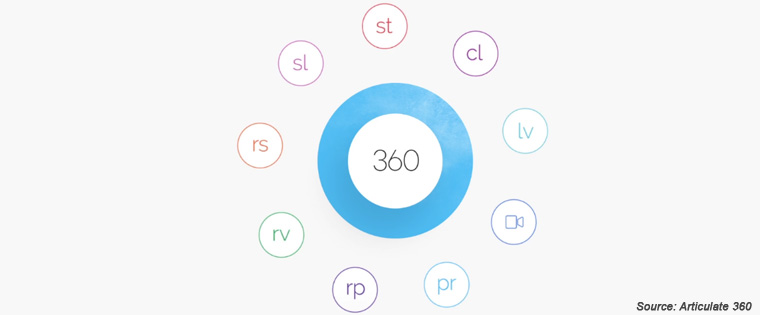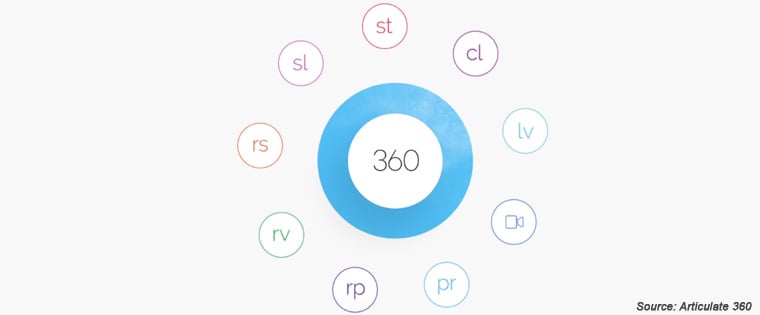What’s Hot with Articulate 360? – Part 4: Responsive Design

Welcome to the fourth post in a series of fourteen posts on Articulate 360. In the first post, we saw that the e-learning development suite is made of nine elements. We also saw the easy authoring features of Storyline 360, the most important component of Articulate 360.
In the second write-up, we looked at the abilities of Storyline 360 to develop animations and learning interactions. In the third blog, we examined the capabilities of Storyline 360 to create software simulations and assessments.
Today, we will look at the features of Storyline 360 that facilitate responsive and accessible online learning development.
Features of Storyline 360 that Enable Seamless Learning Across Devices
Brand New Responsive Player
The Articulate 360 component comes with a responsive Player that renders content dynamically, based on the size of the screen on which it is viewed. The Player responds effectively to various mobile screen sizes, hiding sidebar menus, removing the chrome of browsers, and delivering excellent learning experiences on all smartphones and tablets, thanks to its mobile-friendly playback controls.
Multi-device Previews are Easy
It is simple to have responsive previews of your online course, using Storyline 360. The Articulate tool can help you see how your e-learning content will look on various devices, in landscape and portrait views.
Responsive Playback Restrictions can be Imposed
Storyline 360 allows you to control the orientations in which your learners access the web-based course. For instance, you can develop a course, using the Articulate software, which can be accessed only in the portrait mode.
Excellent Support to HTML5
You can use Storyline 360 to publish courses to HTML5, a device-agnostic web content format. The Articulate application supports touch interactions such as swiping, dragging, pinching, and this feature goes a long way in accessing HTML5 content effectively. You can also publish courses to Flash and Articulate Mobile Player (AMP), a native app available in iOS and Android flavors. The tool is linked to Articulate Review, which enables stakeholders across the world to review the published course and provide their feedback.
We will now look at the features of Storyline 360 that facilitate accessible e-learning.
Accessible Web-based Learning Capabilities of Storyline 360
Easy to Develop Multilingual Online Learning Content
Storyline 360 facilitates the hassle-free translation of e-learning courses. The Articulate tool allows you to export the course as an MS-Word document or an XML file, which can be sent to the translator. When the course is rendered in the desired language, you just need to import the content and publish it to create the course in the target language. Storyline 360 provides good support to ‘right-to-left’ languages such as Arabic and Hebrew, and languages that use Double-byte Character Sets (DBCS) such as Chinese, Japanese, and Korean.
Good Support to Section 508 Regulations
You can use Storyline 360 to develop courses that can be accessed by all learners, including differently-abled staff members. The Articulate application supports JAWS 16 or later versions, with Internet Explorer 10 or later, Google Chrome (the latest version), and Firefox (latest version), for HTML5 content. The tool also allows you to localize content for learners using screen readers.
You can customize the tab order to ensure that screen reading tools deliver the right content at the right time. You can also allow learners to skip Player elements when they’re tabbing through slide content. Furthermore, there is a facility to increase the Player size up to 200%.
Web Content Accessibility Guidelines (WCAG) 2.0 can be Implemented
The Articulate 360 component provides excellent support to the creation of e-learning content, as per WCAG 2.0 guidelines. You can find out more about developing WCAG-complaint online courses in the informative post Articulate Storyline and Web Content Accessibility Guidelines (WCAG).
We thus see that Storyline 360 can be used to deliver responsive and accessible e-learning. In my next post, we will examine another key component of Articulate 360, Studio 360. Stay tuned!!





